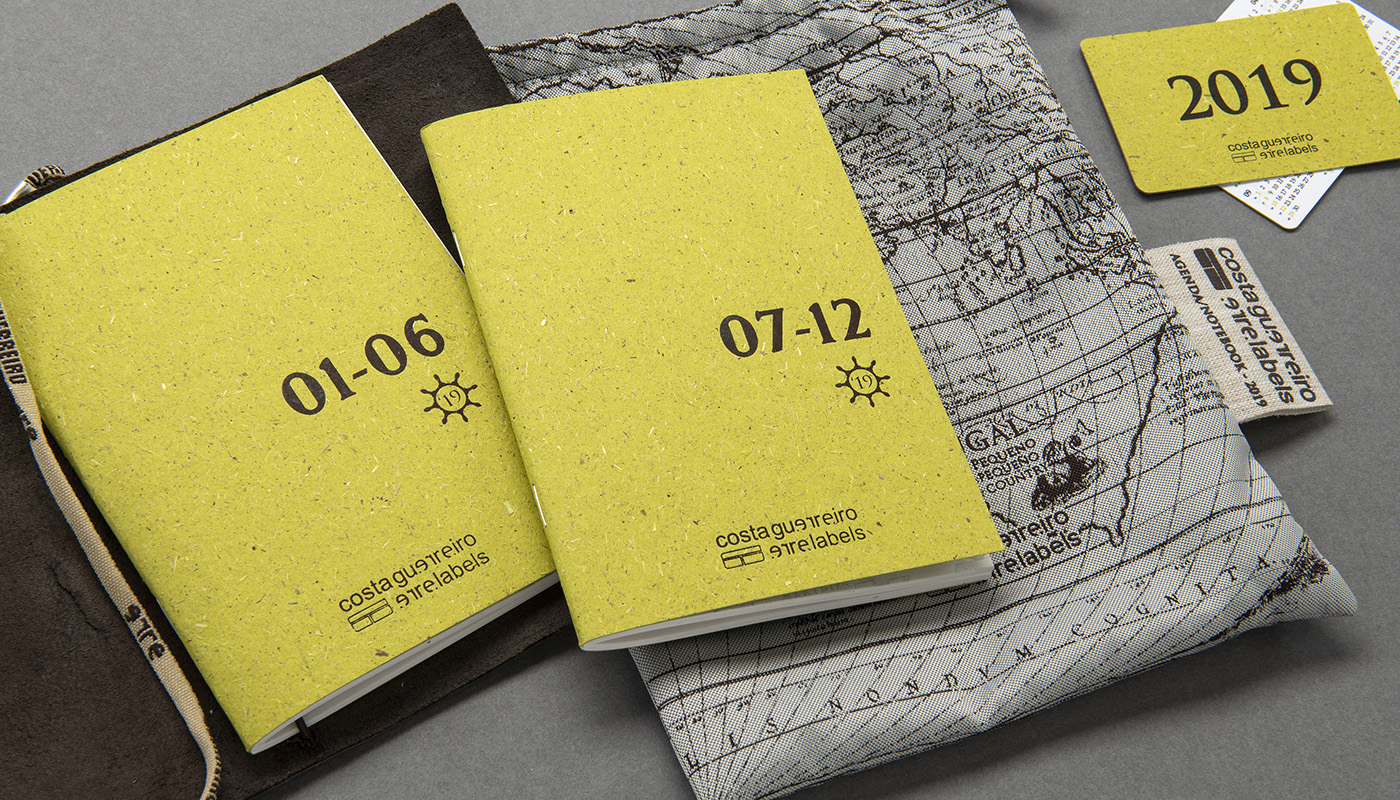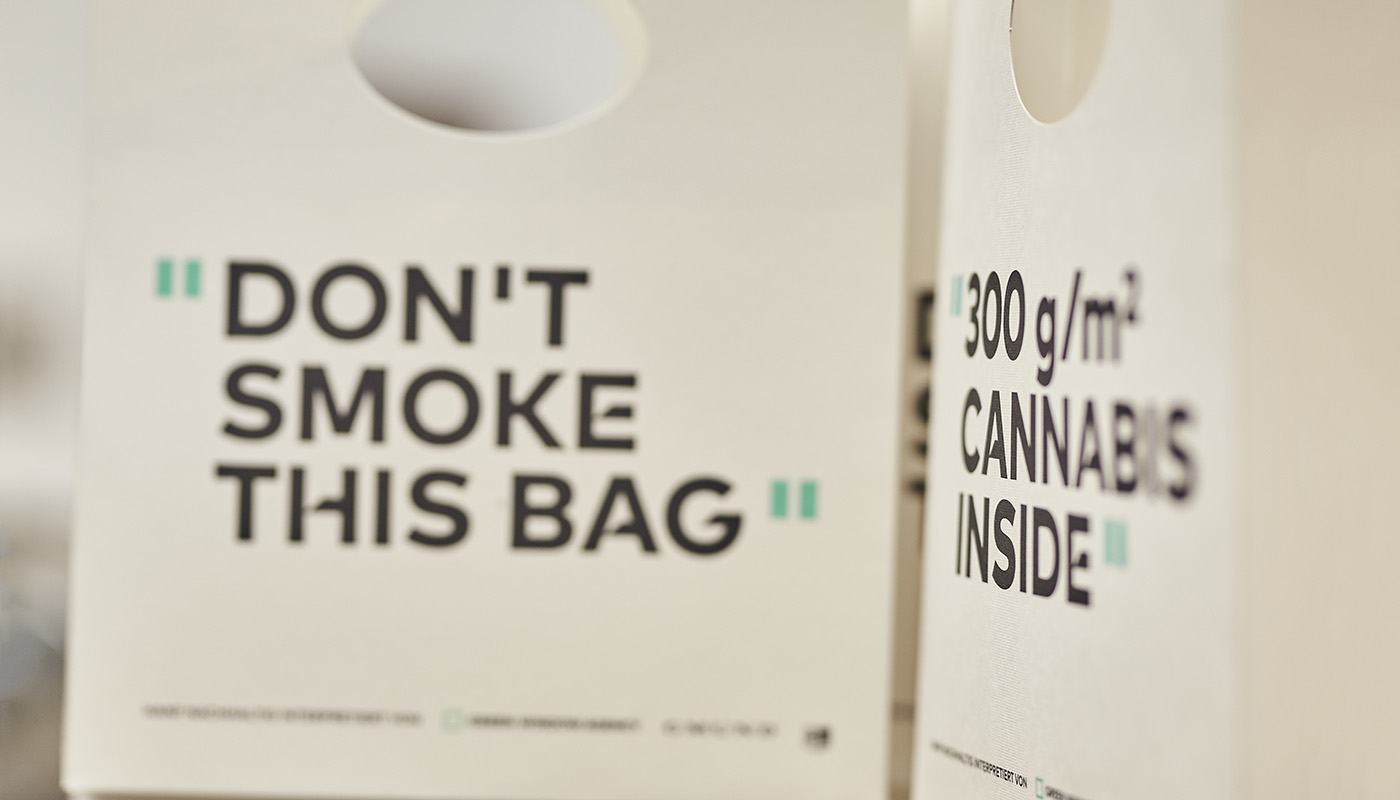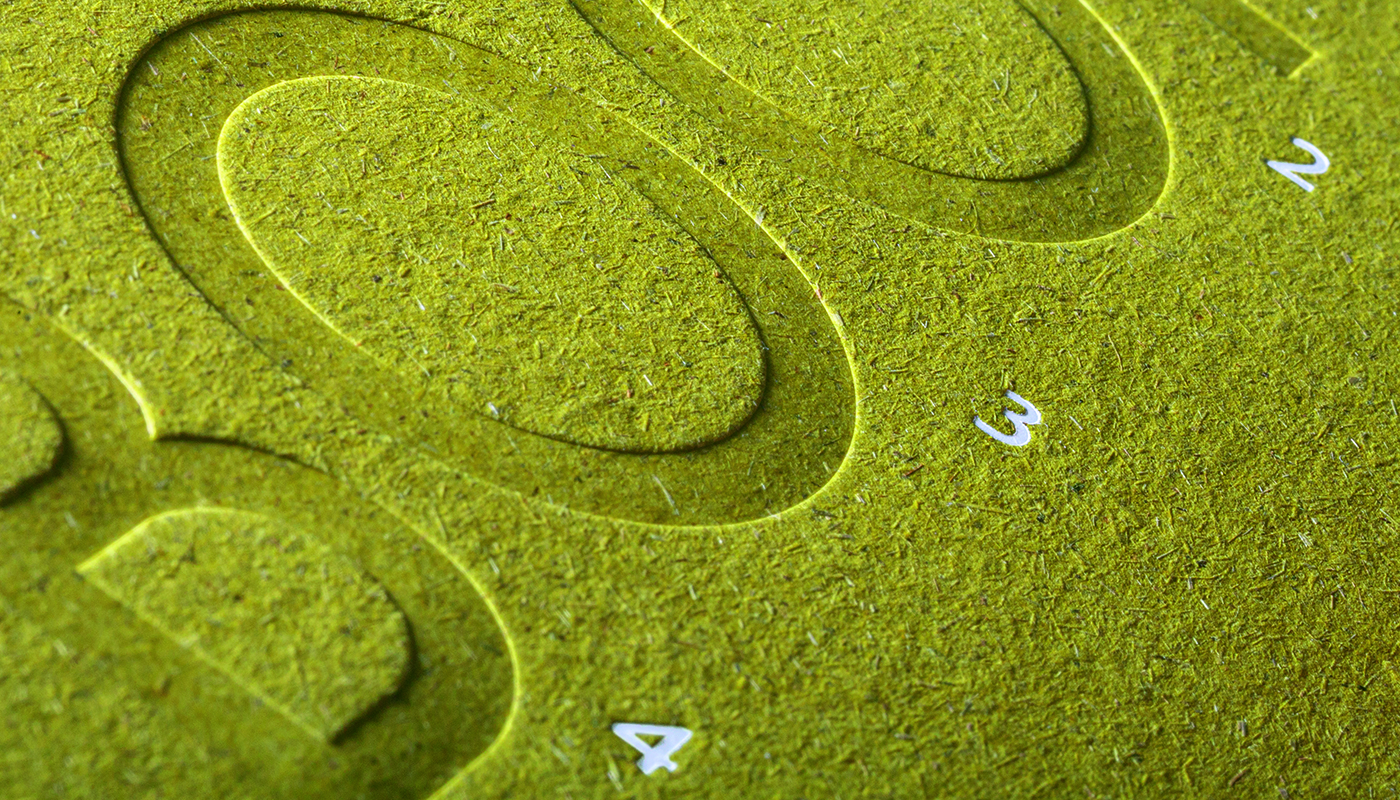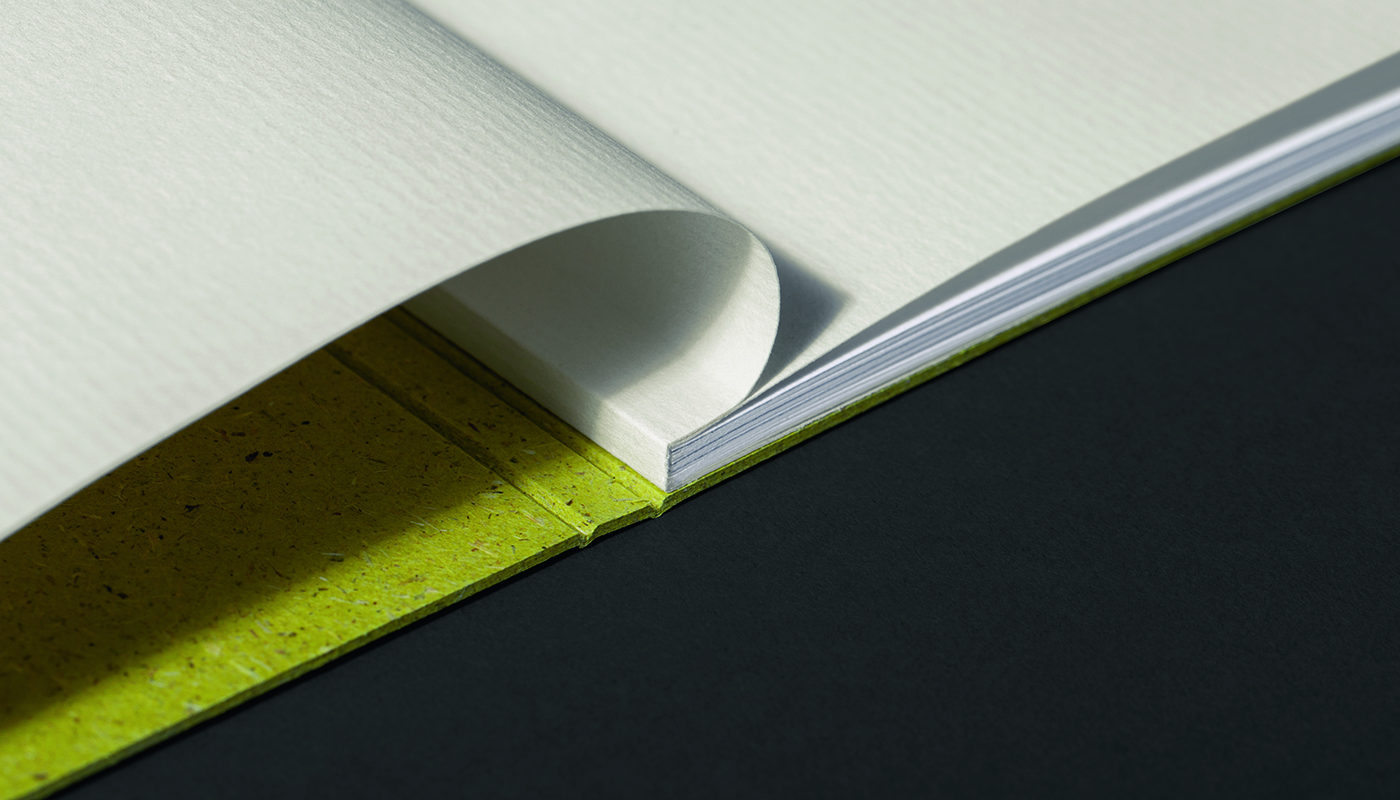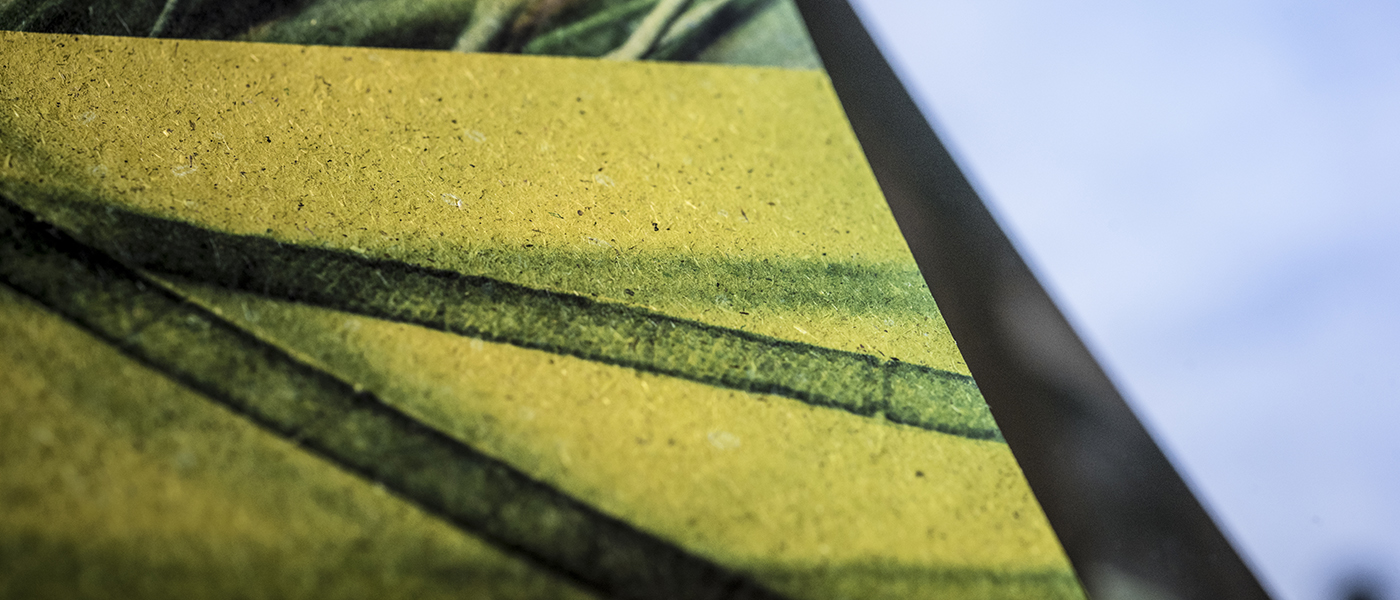
GMUND BIO CYCLE – AN ENVIRONMENTAL PAPER
Gmund Bio Cycle helps make the world a better place. This collection of ecological environmental papers stands for genuinely organic communication. Gmund Bio Cycle makes a statement for ecological action and provides environmentally conscious companies with clear added value in design, feel, story and credibility.
What is environmental paper made of?
Paper is made from plants and is compostable, so it decomposes to provide nutrients for new plants – a perfect ecological cycle. The paper experts from Lake Tegernsee had one primary goal in mind when they developed the new environmental papers for the Gmund Bio Cycle collection: namely, to conserve natural resources. They found a way to replace up to 50% of the raw material (wood) with fast-growing or reused fibers. The resulting papers are made from the following environmentally friendly raw materials.
- Grass: This raw material is available in unlimited quantities – because grass grows everywhere and needs to be mowed regularly. We use grass from Bavarian meadows.
- Straw: Wheat straw is a byproduct of the grain harvest – and we give it a second life as paper.
- Hemp: This fast-growing raw material can be harvested several times a year – quite legally.
- Cotton: The cotton that’s processed in the paper industry is a waste product of the clothing industry and is optimally utilized.
- Recycled pulp: Through recycling, recovered paper is repeatedly reused for paper production. This too is an environmentally friendly and resource-saving process.
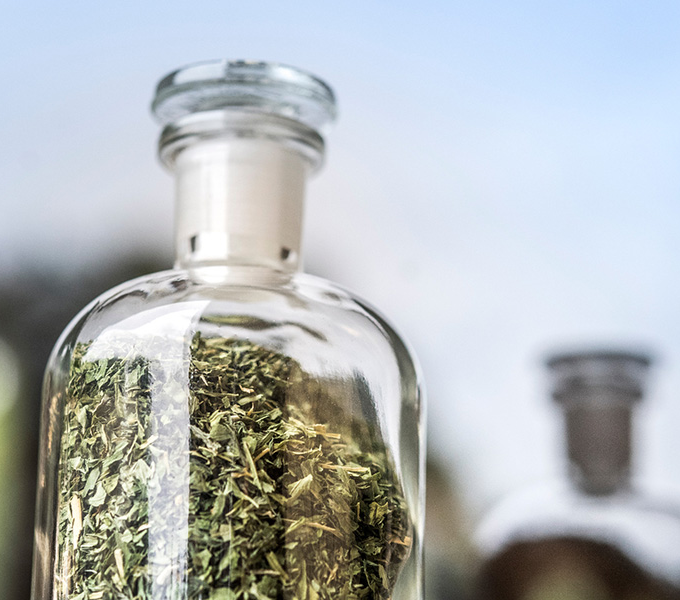
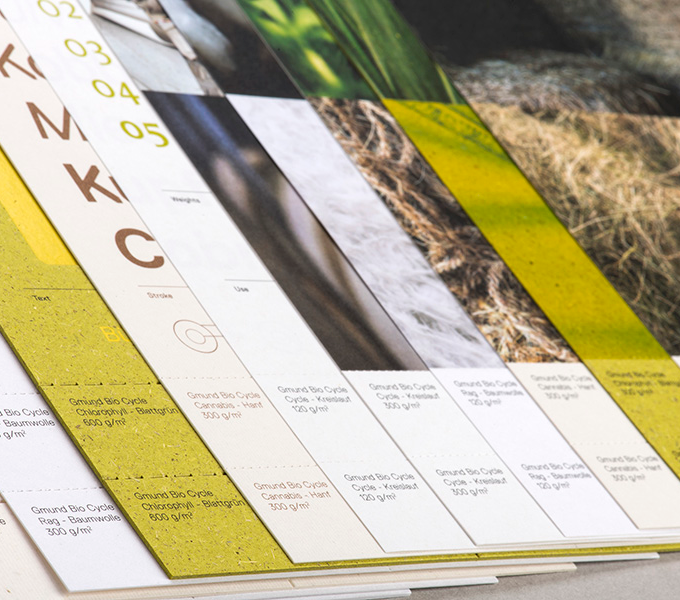
Which Gmund Bio Cycle environmental papers are available?
Gmund Bio Cycle goes one step further. These ecological papers are made from up to 50% wheat straw, grass, cotton and cannabis – all of which are resource-saving annual plants. We also manufacture an ecological classic from 100% recovered paper. That’s truly organic communication.
The Gmund Bio Cycle collection consists of five papers that have a signficant positive impact on the environment. Our beautiful natural papers, each with an excellent eco-balance, are:
- Chlorophyll Leaf-Green: Green cuttings from Upper Bavarian meadows comprise 50% of Gmund Bio Cycle an give this grass-based paper an unsurpassed eco-balance. The grasses are carefully harvested and dried to preserve the long fiber structure needed for a voluminous paper. The addition of natural chlorophyll gives this grass-based paper a vibrant green color.
- Wheat Straw: Gmund Bio Cycle straw paper is much more than merely a special-effect paper. Up to 50% straw pulp derived from genuine wheat straw replaces wood, the classic raw material, and 5% unprocessed straw from Bavarian farms gives this paper the unmistakable touch of real straw that you feel when you stroke the paper‘s surface.
Which Gmund Bio Cycle environmental papers are available?
Cannabis Hemp: Naturalness with no risk of addiction: up to 50% high-quality cannabis pulp from European cultivation is processed in Gmund Bio Cycle hemp paper to give this paper an understated color and slight vegetal inclusions. Long-fiber pulp makes the paper uncommonly strong, gives it a pleasantly coarse texture and distinguishes it as an ideal choice for the packaging sector. A major advantage of hemp paper: thanks to the robust quality of its fibers, hemp paper can be recycled particularly often. Cannabis Hemp paper accordingly improves the overall paper-recycling process.
- Rag Cotton: Gmund Bio Cycle cotton paper contains up to 50% cotton pulp, a waste product from the clothing industry. Combining cotton pulp with FSC®-certified virgin-fiber pulp results in an ecological paper with great purity, durability, a pleasant feel and an elegant style. The long fibers of the cotton plant contribute to outstanding results in embossing and letterpress printing.
- Cycle: Although this environmental paper is made from 100% recovered paper, each sheet shines in elegant white rather than drab recycled gray. Gmund Cycle is the undisputed leader in environmental friendliness. This versatile paper is well suited for many different processing methods.
Depending on the material, the individual environmental papers are available in grammages ranging from 100, 120 and 300 g/m² to 600 g/m².
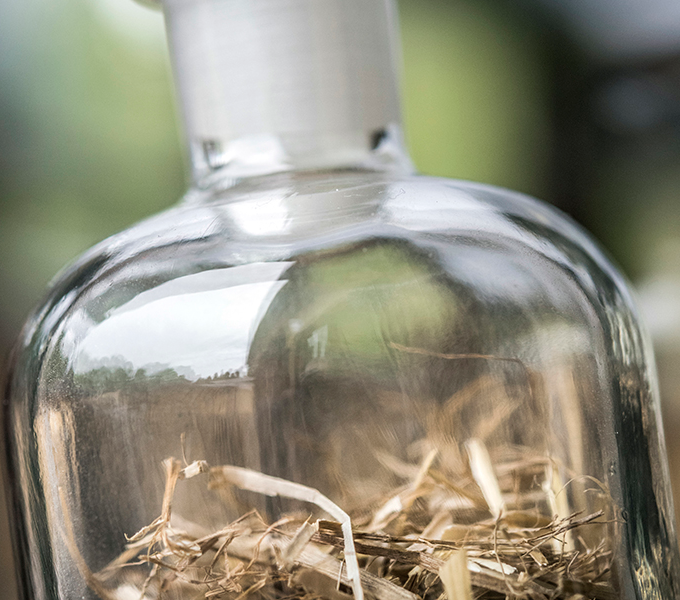
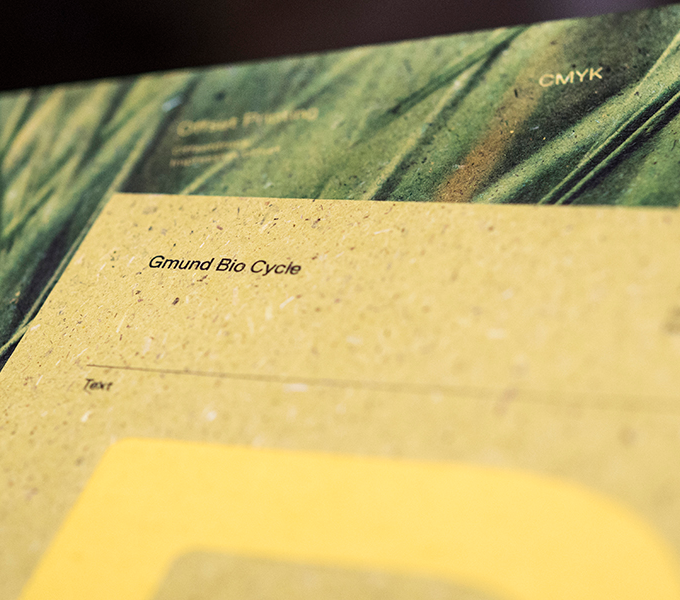
For which printing techniques is recycled paper suitable?
Gmund Bio Cycle is suitable for many common printing techniques:
- Offset printing (Chlorophyll Leaf-Green is suitable only to a limited extent)
- Letterpress printing
- Screen printing
- Blind embossing
- Hot-foil embossing
- Die cutting
The exact specifications always depend on the specific printing techniques and machines used. Thanks to to its high grammage, Chlorophyll Leaf-Green is ideal for letterpress and screen printing. For offset printing, however, Grass Paper can be used only to a limited extent. Please refer to the separate printing information for further details.
What can I use Gmund Bio Cycle environmental paper for?
The Gmund Bio Cycle collection is ideal for companies that want to express their green corporate philosophy through:
- Packaging
- Brochures
- Greeting cards
- Business cards
- Folders
- Printed products
In addition to the look and feel, another important factor is the good feeling that comes from having taken the eco-balance into consideration when choosing paper.
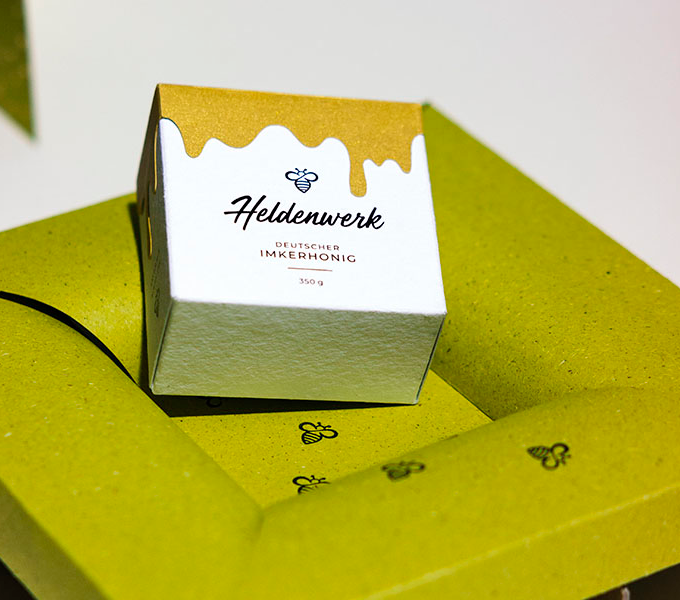
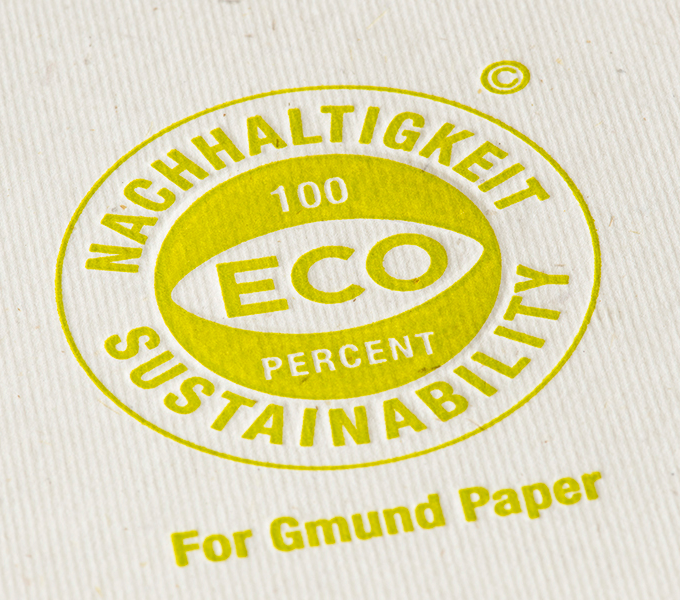
How sustainable is Gmund Bio Cycle environmental paper?
The Gmund ECO certificate applies to Gmund Bio Cycle environmental paper. This certificate stands for sustainability in the processing of all raw materials. The papers of the Gmund Bio Cycle collection contain up to 50% alternative ingredients or 100% recovered paper. The FSC®-certified virgin fibers are sourced from responsible forestry.
Customers can print the Gmund ECO certificate for sustainability on products made from Gmund Bio Cycle, thus making a clearly visible statement for the environment.


